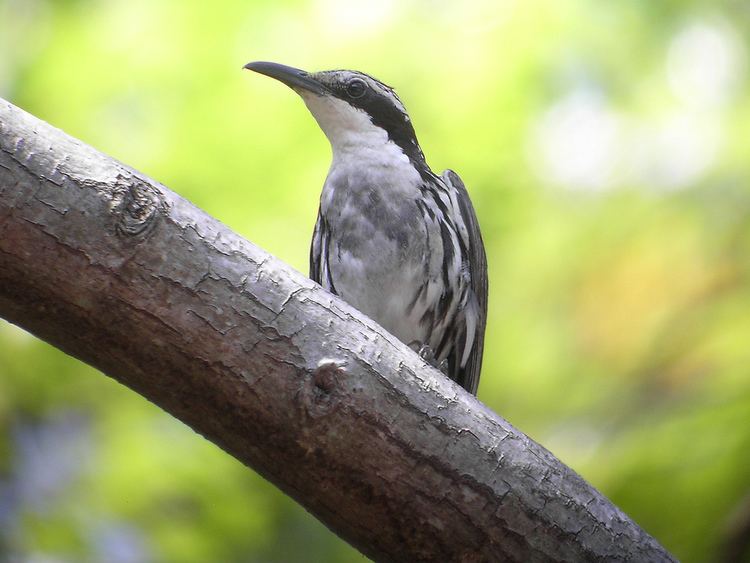Infraorder Passerida Family see text Phylum Chordata Order Passerine | Suborder Passeri Superfamily Muscicapoidea Scientific name Rhabdornis Rank Genus | |
 | ||
Lower classifications Stripe‑headed rhabdornis, Stripe‑breasted rhabdornis, Grand rhabdornis | ||
The Philippine creepers or rhabdornises are small passerine birds. They are endemic to the Philippines. The group contains a single genus Rhabdornis with three species. They do not migrate, other than to make local movements.
There are three species in the single genus Rhabdornis:
Description, systematics and taxonomy
The Philippine creepers are similar in appearance to treecreepers (Certhiidae). They have thin pointed down-curved bills, which they can use to extricate insects from bark, but they have brush-like tongues, which enable them to also feed on nectar.
The placement of genus Rhabdornis in a family of its own (Rhabdornithidae Greenway, 1967) is not accepted by all authorities, and it is sometimes placed in Certhiidae or Timaliidae. The German name, Trugbaumläufer ("false treecreepers"), reflects this uncertainty. More recently, Zuccon et al. 2006 place them in a basal clade inside the starlings in the family Sturnidae. Their closest allies seem to be a number of quite plesiomorphic starling lineages mainly from the Asian-Pacific region (such as mynas), so this placement is phylogenetically as plausible as a distinct family. Judging from biogeography alone, the treecreepers are indeed far less likely to be related to the Philippine creepers than starlings or timaliids, as neither the Certhiidae nor their close relatives expanded into the Wallacea whereas the latter did. Note also the general rarity of small woodpeckers on the Philippines, implying that any bird lineage that would happen to adapt to the same ecological niche was likely to be successful.
Nonetheless, the placement with the starlings requires confirmation. As notoriously confounded by convergent evolution as Philippine creeper anatomy is, the scenario of Zuccon et al. requires the underlying plesiomorphies closer to those present in starlings and thrashers than to those retained in treecreepers and wrens, and vice versa as regards synapomorphies. This has not been tested; in the meantime, it may be noted that the color pattern of Rhabdornis is more similar to that of some Aplonis - a member of the group of starlings supposedly most close to the Philippine creepers - than to that of treecreepers. Both Philippine and treecreepers are cryptic in adaptation to their tree-creeping lifestyle, but this is achieved with a very different camouflage pattern in either. Additionally, they are very distant even among starlings (Zuccon et al. 2006: 340) and may in the end be maintained as a family on their own. The Australian treecreepers (Climacteridae), meanwhile, are an entirely unrelated family of passerine birds which is actually close to bowerbirds (Ptilonorhynchidae).
